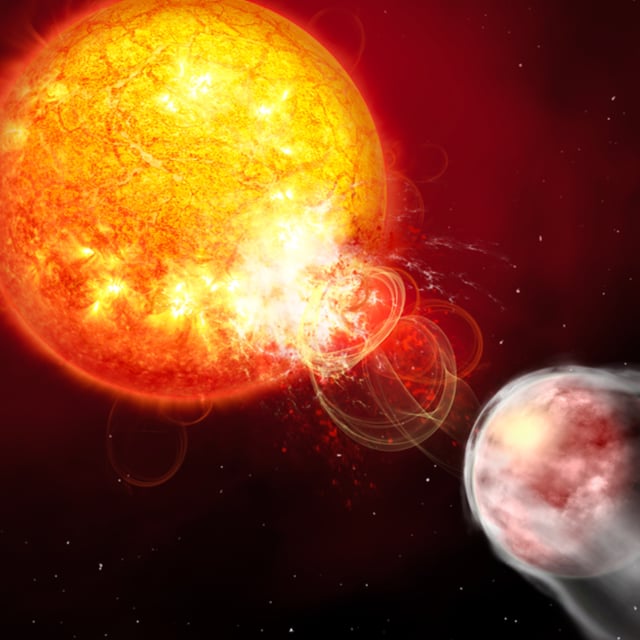Overview
- HIP 67522 b is a Jupiter-sized gas giant with a cotton-candy density that completes an orbit around its 17-million-year-old host star every seven days
- ESA’s Cheops and NASA’s TESS missions captured 15 transits precisely aligned with stellar flares about 100 times stronger than theoretical models predicted
- Co-author Harish K. Vedantham finds that the planet is bombarded with six times more radiation during these flares, accelerating its atmospheric erosion
- The self-induced space weather could shrink the gas giant to a Neptune-sized world within 100 million years
- Led by Ekaterina Ilin at ASTRON, researchers plan follow-up multiwavelength campaigns and refined theoretical models to investigate this novel star–planet magnetic feedback
